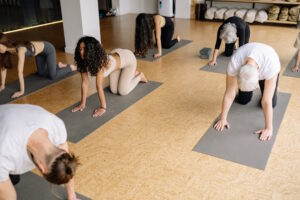
In the realm of stress relief, advanced Pilates techniques can be a game-changer, offering a profound sense of relaxation and rejuvenation. As someone who understands the power of Pilates beyond the physical, I’m excited to delve into how advanced Pilates techniques can provide deeper stress relief. Let’s explore what constitutes the hardest Pilates workout, identify the best exercises for high stress, understand the stress-reducing benefits of Pilates, and uncover strategies to intensify your Pilates practice for even greater stress relief.
What is considered the hardest Pilates workout?
The hardest Pilates workout is often subjective and varies from person to person. However, certain advanced Pilates techniques are renowned for their challenging nature. For example, the “Hundred on the Reformer” or “Teaser” exercises can test your core strength and control. The “Control Balance” and “Snake/Twist” exercises on the Reformer can also be quite demanding. These advanced movements require a high level of stability, flexibility, and control, pushing you to your limits and fostering a deep mind-body connection.
What is the best exercise for high stress?
One of the most effective exercises for high stress is the “Roll Down” or “Articulation of the Spine.” This exercise involves a controlled, sequential movement as you roll down through the spine, vertebra by vertebra. This process engages your core, stretches the spine, and encourages deep breathing. The intentional nature of this movement allows you to focus your mind, release tension, and experience a sense of relaxation.
How can Pilates reduce stress?
Pilates reduces stress through a combination of factors:
1. Mindfulness: The focused and deliberate movements in Pilates require concentration, redirecting your thoughts away from stressors.
2. Controlled Breathing: Pilates emphasizes coordinated breathing, which activates the parasympathetic nervous system, inducing relaxation.
3. Physical Release: The gentle stretches and movements release physical tension stored in the body.
4. Mind-Body Connection: Pilates promotes a strong connection between your mind and body, leading to a greater sense of overall well-being.
How can I make Pilates more intense?
To intensify your Pilates practice for deeper stress relief, consider these strategies:
1. Challenge Your Core: Engage your core muscles more deliberately in each exercise. This not only intensifies the physical aspect but also enhances your mind-body connection.
2. Add Resistance: Incorporate resistance bands, weights, or Pilates equipment like the Reformer to add an extra layer of challenge to your movements.
3. Increase Reps and Sets: Gradually increase the number of repetitions and sets for each exercise, pushing your endurance and strength.
4. Focus on Slow and Controlled Movements: Emphasize slow and controlled movements, especially during the eccentric (lengthening) phase, to intensify the muscular engagement.
5. Incorporate Advanced Variations: Gradually incorporate advanced variations of exercises to challenge your body and stimulate greater adaptability.
Summing it Up
Advanced Pilates techniques offer a pathway to deeper stress relief, leveraging both the physical and mental aspects of the practice. While the hardest Pilates workouts vary, exercises like the “Roll Down” provide exceptional stress relief. Pilates reduces stress through mindfulness, controlled breathing, physical release, and mind-body connection. To intensify your practice, challenge your core, incorporate resistance, increase repetitions, and explore advanced variations. As you explore these advanced Pilates techniques, you’ll discover a new level of stress relief, fostering a harmonious connection between your mind, body, and well-being.